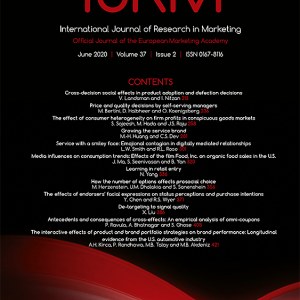
Lemmens, A., Croux, C. and Stremersch, S. (2012). Dynamics in the international market segmentation of new product growth International Journal of Research in Marketing, 29(1):81--92.
-
Affiliated author
-
Publication year2012
-
JournalInternational Journal of Research in Marketing
Prior international segmentation studies have been static in that they have identified segments that remain stable over time. This paper shows that country segments in new product growth are intrinsically dynamic. We propose a semiparametric hidden Markov model to dynamically segment countries based on the observed penetration pattern of new product categories. This methodology allows countries to switch between segments over the life cycle of the new product, with time-varying transition probabilities. Our approach is based on penalized splines and can thus be flexibly applied to any nonstationary phenomenon, beyond the new product growth context. For the penetration of six new product categories in 79 countries, we recover the dynamic membership of each country to segments over the life cycle. Our findings reveal substantial dynamics in international market segmentation, especially at the beginning of the product life. Finally, we exploit the dynamic segments to predict the national penetration patterns of a new product before its launch and show that our forecasts outperform forecasts derived from alternate parametric and/or static methods. Our results should encourage multinational corporations to adopt dynamic segmentation methods rather than static methods.